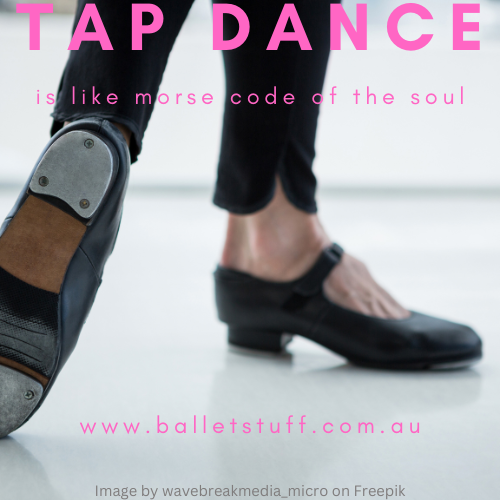The question I just asked Chatgpt to answer for me. Tell me about tap dancing?
Tap dancing is a lively and rhythmic form of dance that involves using the feet as percussive instruments to create sounds and beats. It originated in the United States during the mid-1800s and has evolved into various styles over the years. Tap dancing has been influenced by a blend of African, Irish, and English clog dancing, and it became especially popular in the vaudeville and jazz eras.
Here are some key aspects of tap dancing:
- Tap Shoes: Tap shoes have metal plates attached to the toe and heel, which create the distinctive tapping sounds. The metal plates strike the floor as the dancer’s feet move, producing various tones and rhythms.
- Rhythm and Beats: Tap dancers use their feet to create intricate rhythms, beats, and sounds. Different steps and combinations result in varying sounds, and the dancer’s ability to control the speed and clarity of the taps is essential for mastering the art of tap.
- Techniques: There are numerous tap dance techniques and steps, including shuffles, flaps, cramp rolls, time steps, wings, and more. These steps can be combined in endless variations to create unique routines.
- Improvisation: Tap dance has a long tradition of improvisation, where dancers create rhythms and beats spontaneously. Improvisation showcases a dancer’s creativity, musicality, and skill in responding to the music.
- Broadway Tap vs. Rhythm Tap: There are two primary styles of tap dancing – Broadway tap and rhythm tap. Broadway tap focuses more on the dance elements and often incorporates elements of other dance styles, while rhythm tap is more about creating complex rhythms and sounds.
- Famous Tap Dancers: Tap dance has been popularized by many talented performers throughout history. Some of the legendary tap dancers include Bill “Bojangles” Robinson, Fred Astaire, Gene Kelly, Sammy Davis Jr., and Savion Glover, among others.
- Tap Dance in Modern Times: Tap dance continues to thrive and evolve in modern times. Contemporary tap artists blend traditional techniques with innovative styles, and tap is often seen in stage performances, musicals, TV shows, and movies.
- Tap Dance Education: Many dancers learn tap through classes offered by dance studios, performing arts schools, and community centers. Professional tap dancers often start training at a young age to develop their skills and musicality.
- Tap Competitions: Tap dancers may participate in competitions, showcasing their abilities and creativity. These events provide opportunities for recognition and advancement in the tap dance community.
Tap dancing is a unique and captivating art form that celebrates rhythm, musicality, and the joy of movement. Its fusion of dance and percussion makes it a dynamic and exciting experience for both performers and audiences alike.


Leave a comment
You must be logged in to post a comment.